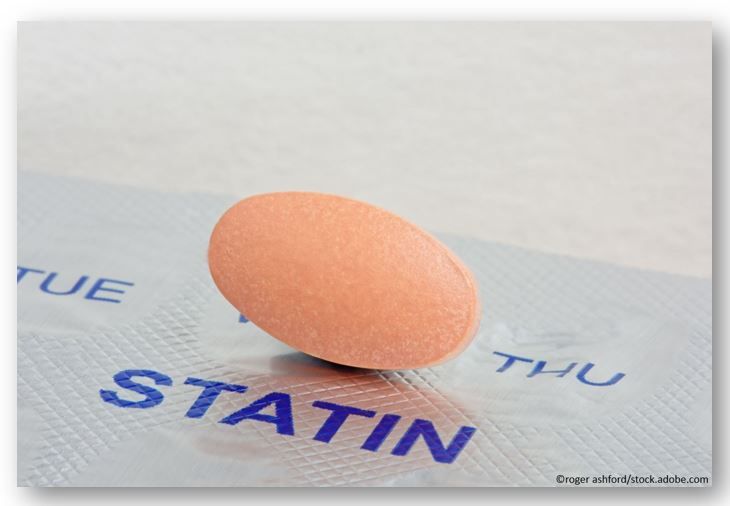- Clinical Technology
- Adult Immunization
- Hepatology
- Pediatric Immunization
- Screening
- Psychiatry
- Allergy
- Women's Health
- Cardiology
- Pediatrics
- Dermatology
- Endocrinology
- Pain Management
- Gastroenterology
- Infectious Disease
- Obesity Medicine
- Rheumatology
- Nephrology
- Neurology
- Pulmonology
Most Eligible Adults are Not Receiving Statins for Primary Prevention of ASCVD, Shows New Study
Statin use remained at only 35% among eligible adults since updated guidelines from ACC/AHA on cholesterol treatment.

Most adults who are eligible for statin use for primary prevention of atherosclerotic cardiovascular disease (ASCVD) are not receiving them, reported researchers in a study published online Monday in Annals of Internal Medicine. In fact, even though statin use has generally increased over time for primary prevention, it has remained at only 35% among those who could benefit since the publication of new guidelines on management of cholesterol in 2013, according to study authors.
The findings indicate “that novel efforts, informed by implementation science and targeting patients with the greatest risk, are urgently needed,” wrote first author Casey J. Kim, MD, Department of Medicine, Beth Israel Deaconess Medical Center, Boston, Massachusetts, and colleagues.
In 2013, the American College of Cardiology and the American Heart Association (ACC/AHA) released updated cholesterol treatment guidelines that “expanded statin eligibility for primary prevention on the basis of [ASCVD] risk score compared with the 2002 Adult Treatment Panel III guidelines,” added Kim and coauthors.
“Previous studies have examined recent trends in statin use for primary prevention but have not assessed the effect of guideline changes,” noted researchers. To fill this gap, they used National Health and Nutrition Examination Survey data from 1999 to 2018 to assess trends in statin use among nonpregnant adults aged ≥20 years who had no known ASCVD and provided fasting laboratory data.
Kim and colleagues hypothesized that there would be greater increases in use of statins for primary prevention among adults who were newly prescribed the drugs based on the 2013 ACC/AHA guidelines.
According to the study, participants were classified as previously, newly, or continuously eligible for statins if they met statin use criteria based only on the 2002 Adult Treatment Panel III guidelines, only the 2013 ACC/AHA guidelines, or both guidelines, respectively.
“Adults who met multiple primary prevention indications by the ACC/AHA guidelines were assigned by the highest criteria met, consistent with guideline hierarchy (low-density lipoprotein cholesterol criteria > diabetes status > ASCVD risk),” wrote Kim and colleagues.
FINDINGS
In total, 21 961 adults were included in the study, of whom 35.6% had an indication for statin use for primary prevention.
The proportion of guideline-eligible adults who reported receiving statins increased from 11.6% (95% CI, 7.7%-15.6%) in 1999-2000 to 33.6% (95% CI, 27.5%-39.6%) in 2013-2014, which is an increase of 22 percentage points (95% CI, 14.7-29.2), according to the results. Between 2013-2014 and 2017-2018, however, there was no significant change in statin use among eligible participants (change –1.2 percentage point, 95% CI –8.6 to 6.3 percentage points).
Moreover, among adults who were newly eligible to receive statins under the 2013 ACC/AHA guidelines, researchers reported no significant change in the proportion of statin users between 2013-2014 and 2017-2018 (change, –2.1 percentage points, 95% CI –15.1 to 11).
Also, results showed that adults with diabetes had an increase of 31.1 percentage points (95% CI 21.0-41.2) in the proportion using statins between 1999-2000 and 2013-2014, but no change between 2013-2014 and 2017-2018 (change, 6.8 percentage points, 95% CI –7.3 to 21.0).
Similarly, adults with an ASCVD risk above 20% had an increase in statin use between 1999-2000 and 2013-2014 (change, 23.1 percentage points, 95% CI 11.4-34.8) but not between 2013-2014 and 2017-2018 (change, –0.4 percentage points, 95% CI –13.2 to 12.3), according to the results.
Patterns of statin use were similar over time among adults with an indication based on ASCVD risk across the 3 groups of ASCVD risk.
“Although the ACC/AHA guidelines expanded indications for primary prevention, they also increased decision-making complexity, requiring new multistep risk calculation,” wrote investigators. “Many clinicians do not routinely use cardiovascular risk calculators because of lack of time, input availability, or buy-in.”
Although electronic health records can calculate ASCVD risk, researchers stated that “they are not routinely implemented and do not address other barriers, such as competing patient priorities and limited time for shared decision-making.”
Source: Kim CJ, Sussman JB, Mukamal KJ, Eades M, Anderson TS. Trends in primary prevention statin use by cardiovascular risk score from 1999 to 2018: A repeated cross-sectional study. Ann Intern Med. Published online December 5, 2023. doi:10.7326/M23-1915
